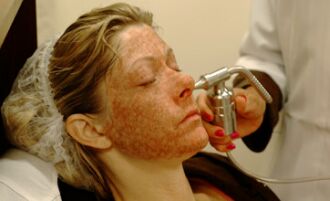At some point, everyone will have to deal with itchy, red, or patchy skin. Sometimes, it is a simple case of dermatitis or skin in need of moisturizer, while other times it can be an indication of an underlying health issue. Therefore, you should always consult a medical professional if you feel that your condition requires medical treatment. Fortunately, red or patchy skin is often treatable at home or under the supervision of a doctor. So, in today’s guide, we will look at some common, DIY ways to deal with red, patchy skin!
1. Diagnose The Underlying Cause
While most people do not have the specialized knowledge of a dermatologist, it’s not always necessary to run to the doctor every time you have a patch of red or itchy skin. In many cases, you can diagnose the underlying problem on your own. However, red, patchy skin can get tricky. For example, if you experience red painful areas on your feet or ankles, it could be a sign of gout, bunions, or something else entirely. You can learn more about the differences between these symptoms from the experts at The Bunion Cure.
2. Evaluate Your Daily Routine
When diagnosing and ultimately treating your skin irritations, it’s important to evaluate your daily routines. For example, do you spend hours on end in the hot sun? If so, do you use skin protection? Have you recently changed the brand of soap, shampoo, moisturizer, or makeup that you use?
Sometimes, the culprit can be even less obvious. Perhaps you are experiencing a lot of stress at work that is manifesting itself as rashy skin. Alternatively, you may be eating certain foods that are causing allergic reactions. No matter the cause, you should always look at your daily routine and how it could be affecting your skin.
3. Alter Your Skincare Habits
If there is no specific cause that you can find on your own, the solution could be as simple as changing your skincare habits to get rid of red, patchy skin. Most people do not moisturize their skin as often as they should. Moreover, if you wear makeup, it is vitally important that you use makeup wipes and moisturizers to keep your face from becoming dry, cracked, or red. Dry skin and red patches are especially common in the winter months, as skin requires more moisturizer than it usually would.
4.Consult a Medical Professional
If you can’t figure out the culprit to deal with red, patchy skin on your own, you should definitely consult your doctor or a licensed dermatologist. This is especially important if you find that the symptoms worsen (patches grow larger, redness does not go away, the color darkens, etc). In rare cases, it could be the result of an infection or underlying health issue that needs to be addressed by a medical professional.
We hope you enjoyed this guide on how to deal with red, patchy skin! If so, be sure to check out some of our other posts on Beauty Ramp today!
Article Submitted By Community Writer






